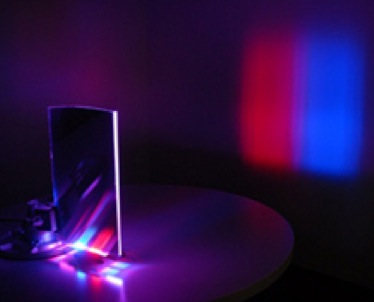Microsoft develops a prototype of an autostereoscopic display
Microsoft Applied Sciencies Group ha desarrollado un prototipo que permite ver imágenes estereoscópicas sin necesidad de gafas especiales. El nuevo sistema combinaría una serie de cristales más estrechos en la base que en la cúspide que mostarían sucesivamente dos imágenes al espectador que estaría seguido en sus movimientos por una mini-cámara.
 Microsoft Applied Sciencies Group ha desarrollado un prototipo que permite ver imágenes estereoscópicas sin necesidad de gafas especiales. El nuevo sistema combinaría una serie de cristales más estrechos en la base que en la cúspide que mostarían sucesivamente dos imágenes al espectador, cuya posición seguiría una mini-cámara, dándole sensación de tridimensionalidad. Aunque ésta técnica se ha desarrollado anteriormente por parte de otros fabricantes, el problema residía en que el espectador podía únicamente permanecer inmóvil en un solo punto. En el caso del prototipo de Microsoft, la mini-cámara permitiría seguirle conociendo así el sistema hacia dónde dirigir la luz. Estos nuevos cristales son tan delgados, between 6 and 11 Mm, que podrían incluso incorporarse a las pantallas de cristal líquido convencionales.
Microsoft Applied Sciencies Group ha desarrollado un prototipo que permite ver imágenes estereoscópicas sin necesidad de gafas especiales. El nuevo sistema combinaría una serie de cristales más estrechos en la base que en la cúspide que mostarían sucesivamente dos imágenes al espectador, cuya posición seguiría una mini-cámara, dándole sensación de tridimensionalidad. Aunque ésta técnica se ha desarrollado anteriormente por parte de otros fabricantes, el problema residía en que el espectador podía únicamente permanecer inmóvil en un solo punto. En el caso del prototipo de Microsoft, la mini-cámara permitiría seguirle conociendo así el sistema hacia dónde dirigir la luz. Estos nuevos cristales son tan delgados, between 6 and 11 Mm, que podrían incluso incorporarse a las pantallas de cristal líquido convencionales.
You liked this article?
Subscribe to our Feed And you won't miss a thing.
• Section: Uncategorized














